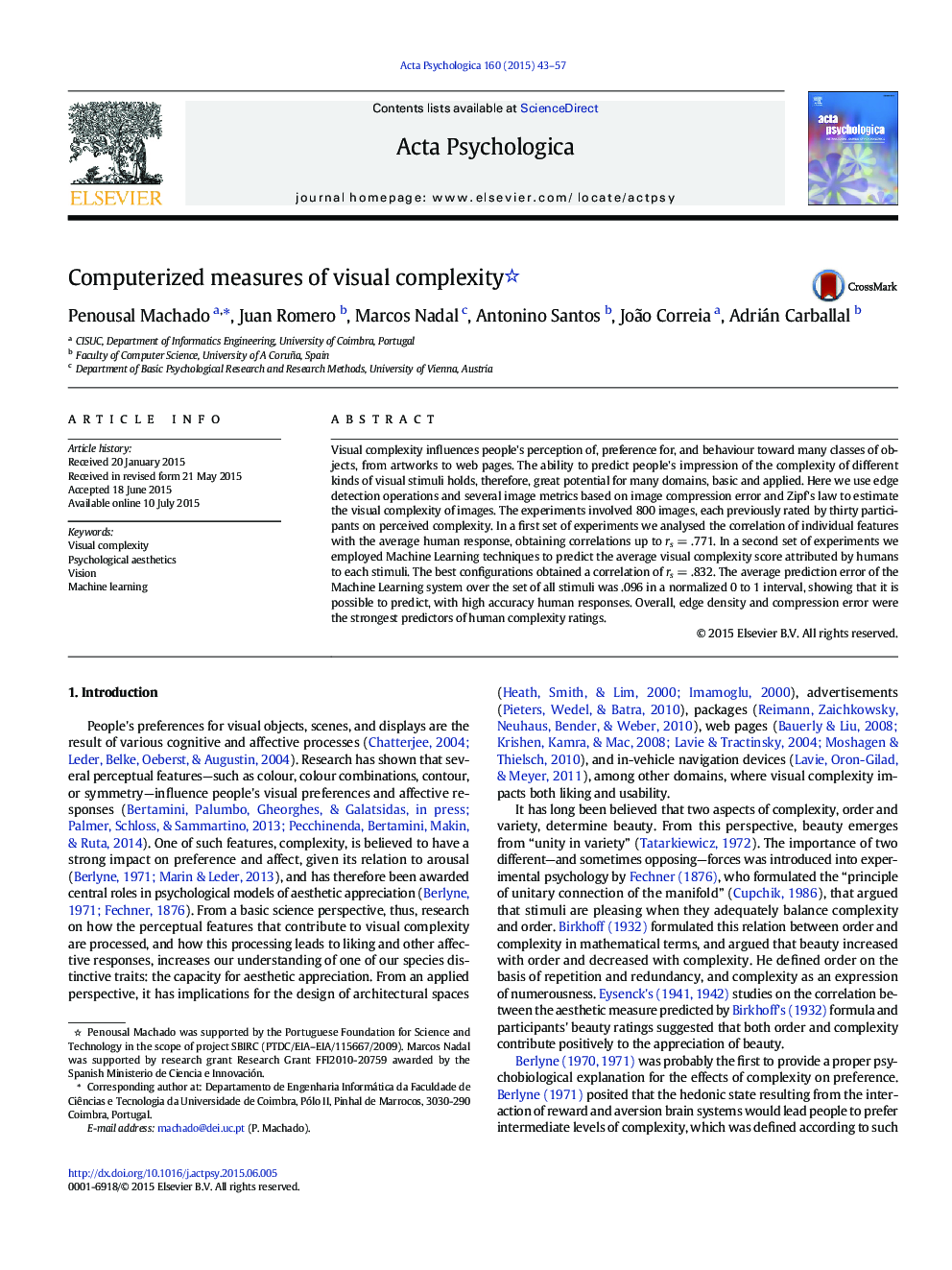| Article ID | Journal | Published Year | Pages | File Type |
|---|---|---|---|---|
| 919679 | Acta Psychologica | 2015 | 15 Pages |
•We introduce estimates of images' complexity and analyse their correlation to human response.•Estimates based on edge detection yield correlations of up to rs = .771 on a set of 800 stimuli.•We present a computer model that learns to predict images' complexity as perceived by humans.•The average prediction error over the set of all stimuli is .096 in a normalized 0 to 1 interval.
Visual complexity influences people's perception of, preference for, and behaviour toward many classes of objects, from artworks to web pages. The ability to predict people's impression of the complexity of different kinds of visual stimuli holds, therefore, great potential for many domains, basic and applied. Here we use edge detection operations and several image metrics based on image compression error and Zipf's law to estimate the visual complexity of images. The experiments involved 800 images, each previously rated by thirty participants on perceived complexity. In a first set of experiments we analysed the correlation of individual features with the average human response, obtaining correlations up to rs = .771. In a second set of experiments we employed Machine Learning techniques to predict the average visual complexity score attributed by humans to each stimuli. The best configurations obtained a correlation of rs = .832. The average prediction error of the Machine Learning system over the set of all stimuli was .096 in a normalized 0 to 1 interval, showing that it is possible to predict, with high accuracy human responses. Overall, edge density and compression error were the strongest predictors of human complexity ratings.
